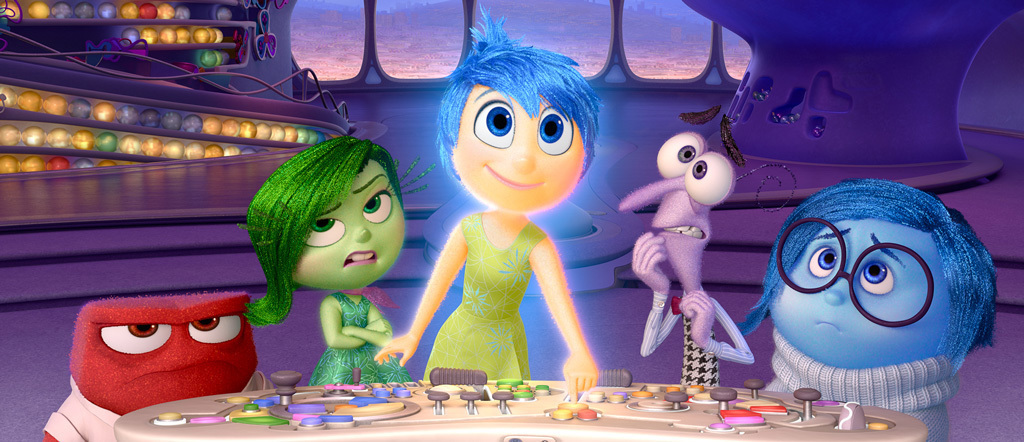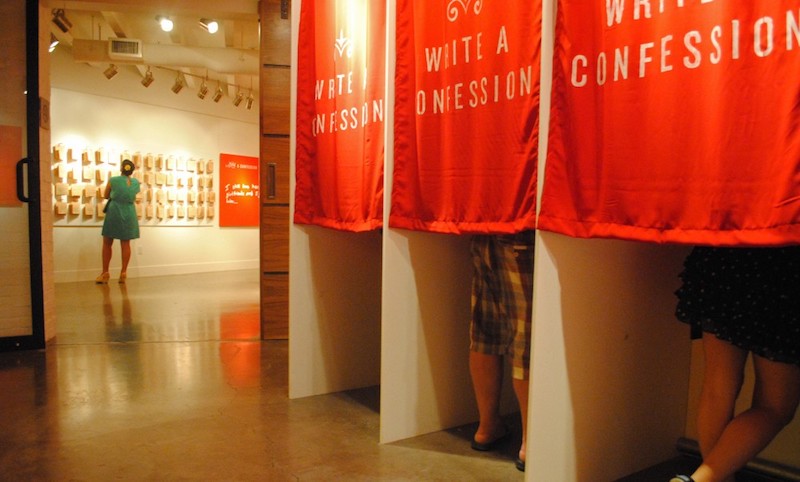Xin Wen
Final Project Progress
1. Initial Idea
2. More Ideas
3. Developing Portable Mood Meter Idea
1. Initial Idea
I really liked the Disney animation Inside Out because it was a very powerful way discussion about how to understand, manage, and enrich our emotions. Also, as an engineer, I was fascinated by the mechanism of the headquarter. So I wanted to make a physical version of the headquarter that people can store and retrive a physcial object that stores their memories as stories and biometric information when they were telling the stories.

Figure 1. Inside Out: Personafied emotions in the headquarter.
In addition, I was interested in having not just the storyteller but other people to access the memories as a way to understand each other's emotions. I was inspired by Candy Chang's installation Confessions. So I was thinking about making a confession booth like headquarter that everyone can access -- a collective headquarter.

Figure 2. Candy Chang's participatory installation Confessions.
However, I do realize it requires a lot of work to make the collective headquarter, probably more than the time I can realistically put in. But I definitely want to keep exploring ways to help people understand emotions.
2. More Ideas
Recently, I have been trying this app called Mood Meter. It roughly divides your moods into four quadrants along two axis, how energized you feel and how pleasant you feel. You can pick a word out of 100 options in the quadrant to describe how you are feeling and write down why you are feeling so to help people understand their feelings and enlarge their vocabulary to describe their feelings. It's a fantastic idea but I often forget to use it. So I've been thinking how I can build on this idea and make a physical version that you carry around so you will always see it and be reminded to check in with yourself.

Figure 3. Emotional Quadrant.
I have been kinda stressed out recently when I were running to places and feeling like I'm falling behind all of my commitments. It made me think of incorporating something you can release your stress into in my final project. One idea I have so far is to have my portable headquarter to be like a stressball that can register your emotions. The harder you squeeze it, it will move you more toward the unpleasant end of the axis on the mood meter. I may have to give up the storytelling part for the scope of the final project. But the next step is to look into deformable objects and how to use them to register gestures.
3. Developing Portable Mood Meter Idea
I've been brainstorming how to fabricate the physical mood meter. Squeezing seems like an intuitive way to represent the energy axis. Initially, I wanted to use another gesture to represent the pleasant/unpleasant axis, e.g. shaking the object. However, none of the ones I thought of seemed intuitive. So I thought about doing facial expression recognition. After some simple google search, there seems to be quite a number of tutorials and APIs. Because now I need to incorporate a camera into my portable headquarter, I had to move away from the handheld device idea. It will probably be more like a little emotion bot you can put on your desk so the camera can do facial recognition. The next step is to start modeling the emotion bot and look into facial expression recognition.

Figure 4. Sketch.
4. Fabricating the Emotion Bot Body
I originally wanted to use the week of molding and casting to make the body of the emotion bot but the test run of a simpler design took me way too long to get to design the mold for the emotion bot. Now that I know how to do casting and molding, I'm going to secure some translucent silicone to make the body soon.
5. Redesigning the Final Project
As I was working on assignments of the past couple weeks, I realized my original plan with pressure sensor and camera was a bit problematic. With the pressure sensing, it will be hard to have 10 fine thresholds. Even if someone gets the right pressure, I will have to implement another input to have the user confirm the device is outputing the correct emotion, which just makes the process less straightforward. With the facial expression recognition, it's even harder to calibrate the subtle differences and people don't necessarily express their emotion the same way. In addition, in lieu with Neil's emphasis on spiral design, I decided to modify my plan and make the interaction clearer. I'm going to make four little figures representing the four main categories of emotions (the four quadrants in Mood Meter). The user can squeeze one of them and the software interface will bring up a page displaying all the specific emotions associated with that little figure and the user can just select one of them. The design and fabrication process of this final version is documented on the final presentation page.